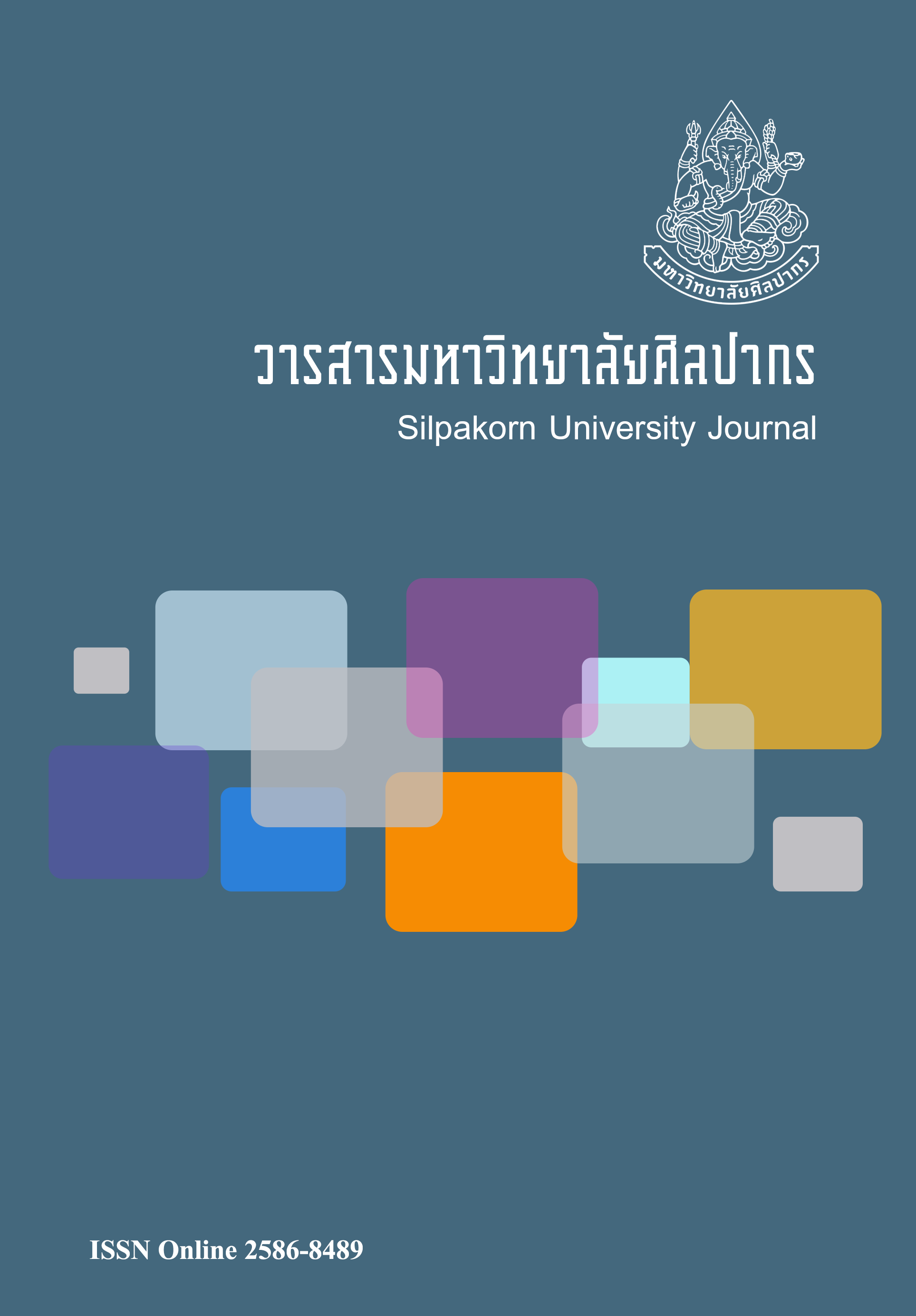การพัฒนาสื่อการเรียนการสอนด้วยแอพพลิเคชันสมาร์ทโฟนในรายวิชาโลหิตวิทยา (The development of instructional media using applicationon smartphone: Hematology course)
Main Article Content
Abstract
งานวิจัยนี้มีวัตถุประสงค์เพื่อพัฒนาสื่อการเรียนการสอนบนระบบปฏิบัติการของสมาร์ทโฟน สำหรับรายวิชาโลหิตวิทยา หลักสูตรวิทยาศาสตร์บัณฑิต (เทคนิคการแพทย์) มหาวิทยาลัยหัวเฉียวเฉลิมพระเกียรติ โดยแอพพลิเคชันนี้สร้างขึ้นบนระบบปฏิบัติการแอนดรอยด์เพื่อนำโทรศัพท์มาใช้ในการศึกษา ผลการประเมินประสิทธิภาพโดยรวมของระบบจากผู้เชี่ยวชาญ 5 ท่าน ได้ค่าดัชนีความสอดคล้องมากกว่า 0.5 และมีความเป็นปรนัยของแบบทดสอบ เมื่อระบบได้ปรับปรุงแก้ไขแล้วจึงทำการวิจัยเชิงทดลองเบื้องต้นในกลุ่มตัวอย่างนักศึกษาคณะเทคนิคการแพทย์ ชั้นปีที่ 3 จำนวน 30 คน เป็นแผนการทดสอบก่อนและหลังการทดสอบแบบกลุ่มเดียว ได้ค่าประสิทธิภาพ E1/E2 เท่ากับ 75.53/71.80 (ระดับ 1) และ 73.33/70.47 (ระดับ 2) ตามลำดับ เมื่อประเมินเจตคติและความพึงพอใจของผู้เรียนด้วยแบบสอบถามจากมาตรการประมาณค่า 5 ระดับ พบว่ามีค่าเฉลี่ยความพึงพอใจอยู่ที่ระดับมาก (4.20) ส่วนผลการเปรียบเทียบผลสัมฤทธิ์ทางการเรียนด้วยสถิติ Paired t-test พบว่าคะแนนเฉลี่ยหลังเรียนมีค่ามากกว่าคะแนนเฉลี่ยก่อนเรียนอย่างมีนัยสำคัญทางสถิติที่ระดับ 0.05 เพื่อหาพัฒนาการที่เพิ่มขึ้นของผู้เรียนคณะผู้วิจัยจึงนำสื่ออิเล็กทรอนิกส์นี้ไปให้นักศึกษาฝึกทักษะในกลุ่มใหญ่ จำนวน 100 คน แล้วหาค่าดัชนีประสิทธิผล เมื่อวัดเป็นรายกลุ่มได้ค่าดัชนีเท่ากับ 0.65 เพื่อเป็นการส่งเสริมกิจกรรมทางการศึกษาการนำเอาเทคโนโลยีไอซีทีมาใช้ร่วมกับการจัดการเรียนการสอนแบบอีเลิร์นนิงโดยประยุกต์ใช้ร่วมกับสมาร์ทโฟนนับว่าเป็นเครื่องมือที่เอื้อประโยชน์ต่อนักเรียนผู้ที่มีอุปสรรคด้านการเรียนรู้หรือขาดทักษะการรายงานรูปร่างลักษณะเซลล์ตลอดจนการจัดระดับความผิดปกติของเม็ดเลือดแดง
This study aims to develop an instructional package, analyze the effectiveness and satisfaction of medical technology students in using instructional media on smartphone operating system in hematology course; a required course for a Bachelor of Science (Medical Technology) degree at Huachiew Chalermprakiet University. The application software was designed for mobile learning on Android operating device. The results of the overall performance as evaluated by five experts. The content validity has an index of item objective congruence (IOC) index by more than 0.5 and the test has an objectivity. After the system was revised, a pilot study was carried out on 30 third year medical technology students by using the one group pretest-posttest design. The efficiency of the system (E1/E2) was 75.53/71.80 (level 1l) and 73.33/70.47 (level 2), respectively. The paired t-test was used to compute the effectiveness of learning process. It was found that the mean score of post-test was significantly higher than the pre-test at the significance level 0.05. In order to measure the learning progress of the students, we tried out the electronic media study on a large group of students (n = 100). When determined as a group, the effectiveness index (E.I.) was 0.65. The attitudes and satisfactions of the students were assessed by using a from 5 scales. It was found that the mean of satisfaction score was at the high level (4.20). Therefore, to promote educational activities, combining ICT with E-learning using the smartphone is a helpful tool for students who have difficulties learning or lacking the skill in reporting red blood cell morphology and abnormalities of red cell grading.
Downloads
Article Details
References
Khantama, T. (2012). Information repackaging and dissenmination (การผลิตและการเผยแพร่สารสนเทศ) (5th ed.). Bangkok: Sandusit Graphic Site.
Komanasin, N. & Tangvarasittichai, O. (Eds.). (2015). Harmonization of red blood cell grading. (เกณฑ์มาตรฐานการจัดระดับความผิดปกติของเม็ดเลือดแดง). [Online]. Retrieved January 26, 2016 from http://www.mtcouncil.org/site/content/view/786
Ministry of University Affairs. (1996). The 8th Higher Education Development Plan B.E. 1997-2001 (แผนพัฒนาการศึกษาระดับอุดมศึกษา ฉบับที่ 8 พ.ศ. 2540-2544). Bangkok: Natikul Press.
Nuangchalerm, P. (2015). 21st Century skills learning in science (แนวการเรียนรู้วิทยาศาสตร์ในศตวรรษที่ 21). Journal of Rangsit University: Teaching & Learning, 9(1), 136-154.
Panit, W. (2012). Learning approach for students in 21st century (วิถีสร้างการเรียนรู้เพื่อศิษย์ในศตวรรษที่ 21) (1st ed.). Bangkok: Sodsri-SaritwongFoundation.
Panit, W. (2015). Teachers’ skill for Thai students in 21st century learning framework(ทักษะครูเพื่อศิษย์ไทยในศตวรรษที่ 21). Journal of Learning Innovation Walailak University, 1(2), 3-14.
Plachaipiromsil, S. & Pornpiriyalumlerd, Y. (2012). Tablet computer: a popular medium in hybrid learning (แท็บเล็ตสื่อยอดนิยมในยุคการเรียนแบบไฮบริด).[Online]. Executive Journal, 32(3), 134-135. Retrieved January 26, 2016 from http://www.bu.ac.th/knowledgecenter/executive_journal/july_sep_12/index.html
Suttirat, C. (2015). 80 Innovations for student centered learning (80 นวัตกรรม การจัดการเรียนรู้ที่เน้นผู้เรียนเป็นสำคัญ) (6th ed.). Nonthaburi: P BalansDesign and Printing.
Thanhikorn, B.(2008). Application of information and comunication technology in education (การประยุกต์ใช้เทคโนโลยีสารสนเทศเพื่อการเรียนการสอน)(1st ed.).Bangkok: National Electronics and Computer Technology Center.
Thongwichit, W.(2016). Internet of things (เมื่อทุกสิ่งอิงกับอินเทอร์เน็ต). [Online].Retrieved May 13, 2017 from http://oho.ipst.ac.th/internet-of-things
Thongwichit, W.(2016). Internet of things (เมื่อทุกสิ่งอิงกับอินเทอร์เน็ต). [Online].Retrieved May 13, 2017 from http://oho.ipst.ac.th/internet-of-things/


